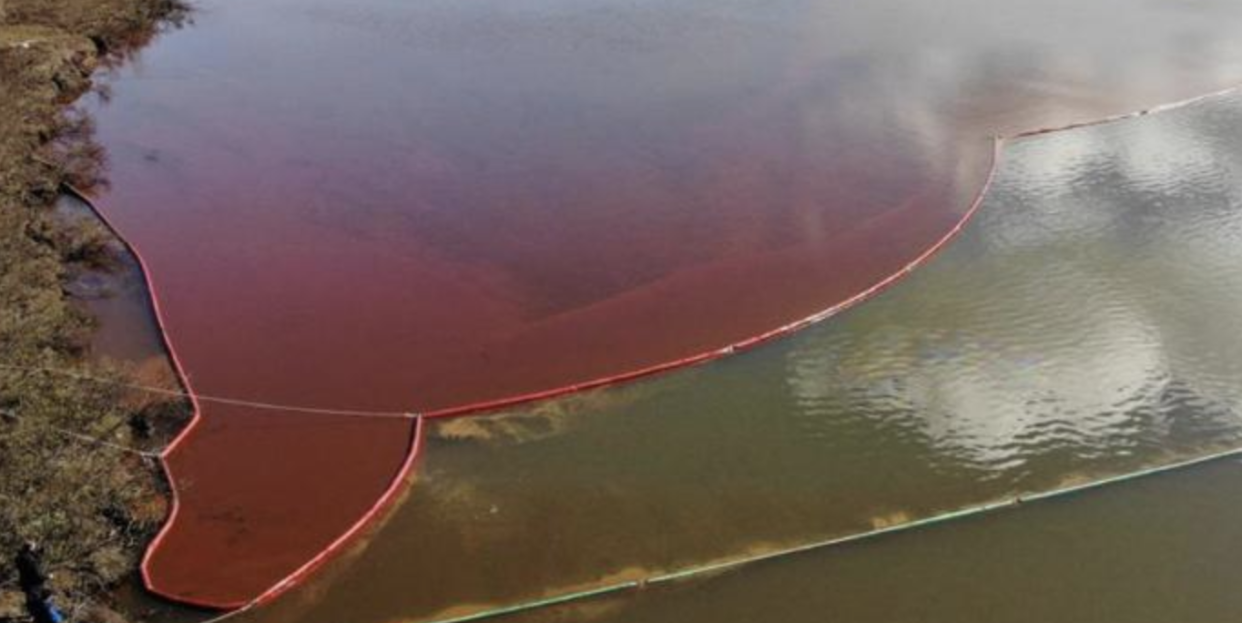A Catastrophic Oil Spill Turns a Russian River Red

The Siberian city of Norilsk has entered a state of emergency after a power plant leaked 20,000 tons of oil into surrounding rivers on May 29, 2020.
The chief operating officer of the plant said that it's possible that thawing permafrost could have been responsible for damaging the tank that leaked the oil.
Greenpeace has likened the extent of the damage to the 1989 Exxon Valdez spill and said that it could take between five and 10 years to completely clean up.
Vladimir Putin has criticized local authorities in Siberia's Norilsk, a city situated above the Arctic Circle, for their slow response to a diesel spill that turned regional rivers red. In fact, it's reported that Putin only found out about the spill after seeing it on social media two whole days after it began.
State of emergency in Norilsk after 20,000 tons of diesel leaks into Arctic river system. Fear that thawing permafrost caused damage to storage tank https://t.co/EYvzar8jUQ pic.twitter.com/oN4pOtLZy0
— The Siberian Times (@siberian_times) June 2, 2020
Then, it got worse. On June 9, 2020, The New York Times reported that the spill had reached Lake Pyasino. This lake flows into the Pyasina River, which feeds into the Arctic Ocean.
Nornickel, the power plant's parent company, says that it's possible an oil tank sank into the ground, becoming damaged and leaked due to thawing permafrost, the result of “abnormally mild summer temperatures” per Sergey Dyanchenko, chief operating officer of Nornickel. Still, Nornickel maintains that the spill has not yet reached Lake Pyasino adding that “structures” had been set up on the Ambarnaya River to prevent the spill from further spread.
Norilsk is already one of the most polluted places in the world—and the most polluted city in Russia—due, in part, to the number of factories located there. Another factor contributing to Norilsk's rampant pollution is the fact that the area is home to the largest nickel, copper, and palladium deposits in the world.
“The smelting is directly responsible for severe pollution, generally acid rain and smog,” says NASA.
Alexei Knizhnikov, oil and gas program leader with the World Wildlife Fund (WWF), says that it's likely that this is Russia's second largest oil spill after the 1994 Usinsk spill in which an estimated 100,000 tons of oil had burst from an old pipeline.
Knizhnikov adds that because diesel is lighter than oil, it will probably evaporate instead of sinking but says that it's “more toxic to clean up.” Sergey Verkhovets, the coordinator of Arctic projects with the Russian WWF, says that this event will result in consequences “for years to come.”
“We are talking about dead fish, polluted plumage of birds, and poisoned animals,” Verkhovets adds. As of publish time, the official cause of the spill remains under investigation.
This isn't the first time Nornickel has been involved in an environmental spill. In 2016, heavy rains caused overflow at a dam which led to the Daldykan river turning bright red.
You Might Also Like

